Bodybuilding demands a tremendous amount from your muscles, joints, and connective tissues. The sport revolves around progressively overloading your body to spur new growth through training, nutrition, and recovery.
However, without care, these same forces that drive adaptation can also lead to painful and debilitating injuries. While bodybuilding is statistically safer than many sports, injuries remain an ever-present concern.
Every committed bodybuilder will likely experience various ailments over their career, from minor muscle strains to significant tendon ruptures. However, intelligent precautions can drastically reduce your injury risk.
This all-encompassing guide delves into the most prevalent bodybuilding injuries, their underlying causes, and actionable steps to keep your hard-earned physique intact.
Understanding Injury Risk in Bodybuilding
Multiple factors make bodybuilders susceptible to particular injuries not seen as often in other athletic endeavors. These include:
Extreme Weights
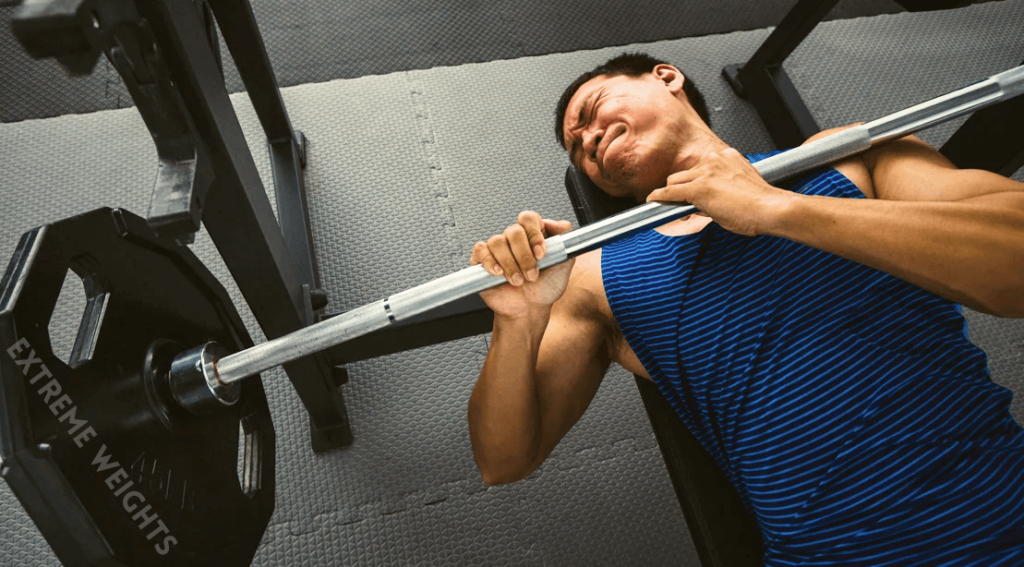
Bodybuilders regularly handle weights close to their absolute limits, especially on compound moves like squats, deadlifts, and presses. Lifting near-maximal loads substantially increases injury risk.
High Volume
Most training programs emphasize higher volumes, multiple exercises per muscle, and training to fail to maximize hypertrophy. This cumulative fatigue weakens connective tissues and hinders recovery.
Repetitive Strain
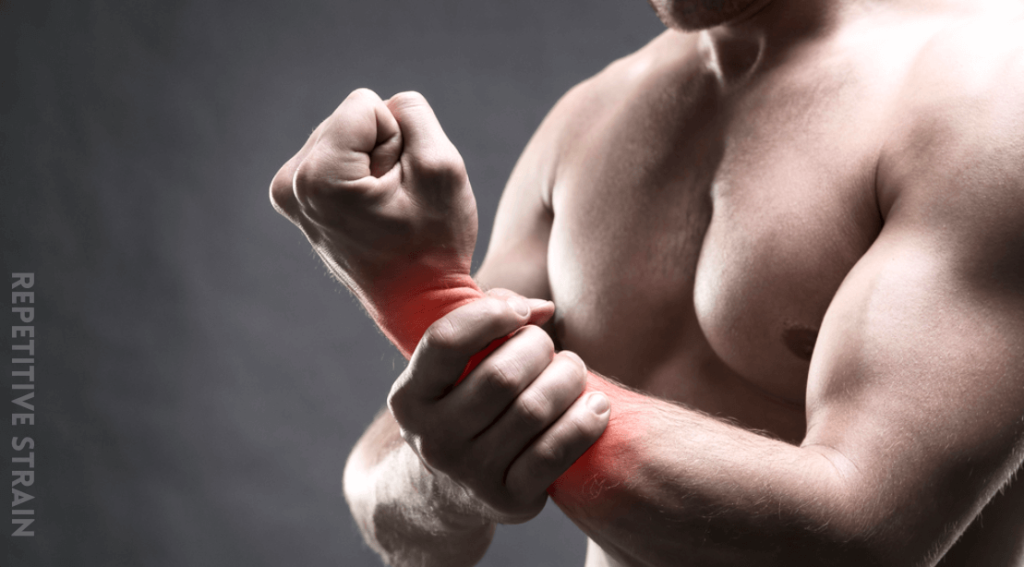
Bodybuilders use a limited pool of exercises and repeat these movements week after week. This pattern of chronic overuse often precipitates injuries.
Year-Round Training
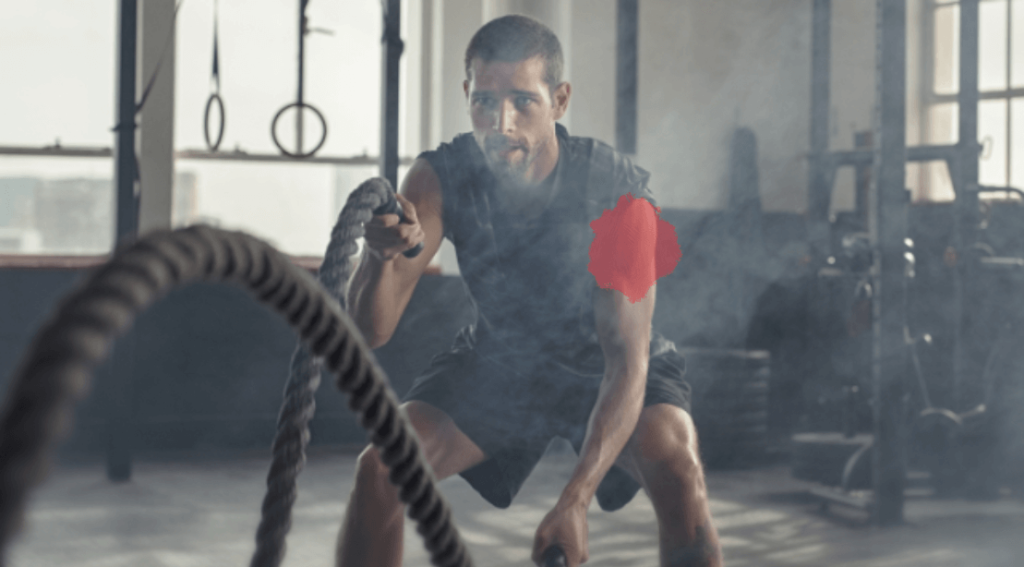
Competitive bodybuilders rarely take extended time entirely off from training. The constant strain leads to overuse issues and incomplete healing of nagging injuries.
Forceful Eccentrics
Bodybuilders prioritize slow, controlled repetitions to maximize time under tension. However, overly forceful eccentric contractions can damage muscles and tendons.
Joint Misalignment
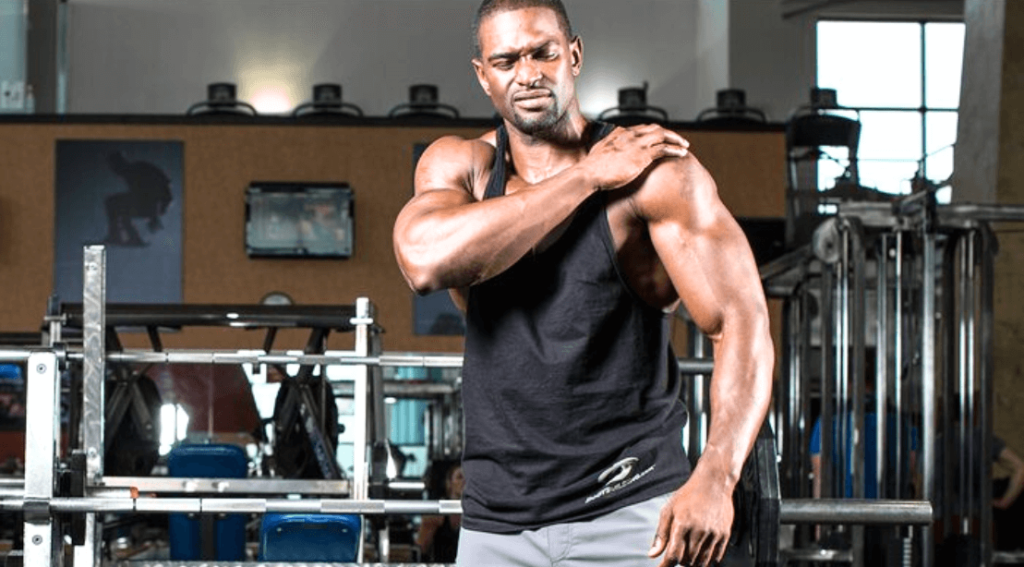
Exercises like heavy barbell rows and behind-the-neck presses encourage poor shoulder and spinal positioning. This places hazardous stresses on muscles, ligaments, and discs.
With these risk factors in mind, let’s examine common bodybuilding injuries and critical strategies to avoid them.
Muscle Strains and Tears
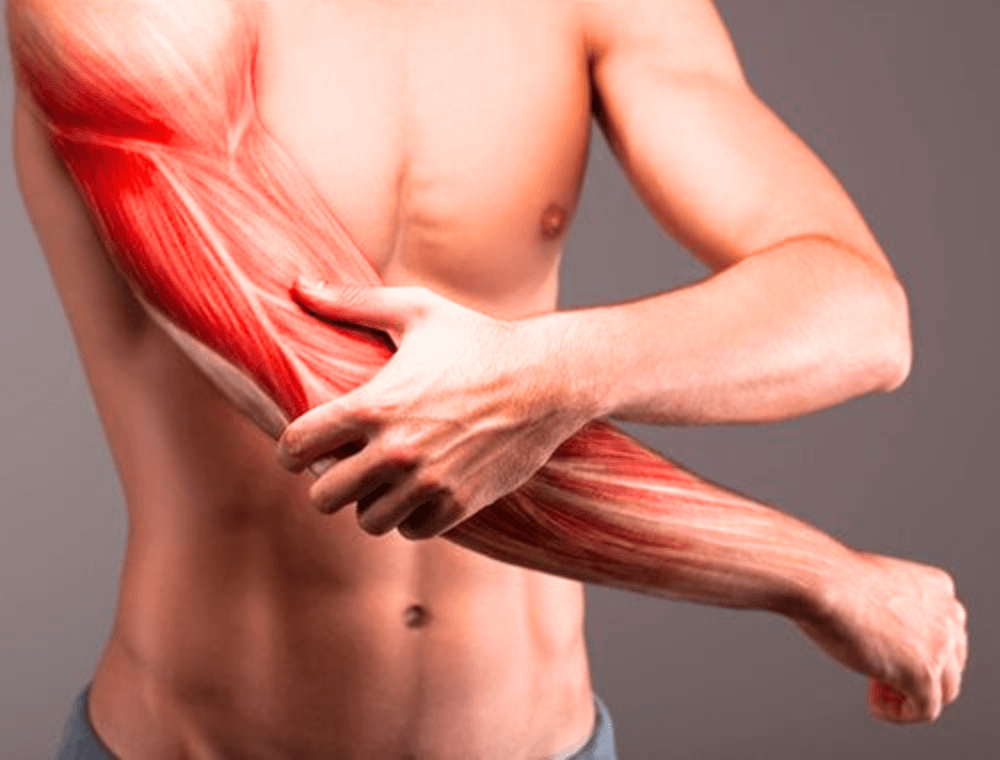
Tears or strains represent partial to complete ruptures of the fibers that make up skeletal muscle tissue.
They occur when muscles are exposed to more tensile force than they can withstand. Strains most often affect the biceps, triceps, chest, hamstrings, and lower back.
Grade 1 strains involve minor tearing of just a few muscle fibers. You may experience some soreness and tightness but no loss of strength or function. Grade 2 strains are more extensive, with noticeable pain, swelling, and bruising.
Grade 3 strains are complete or near-complete muscle tears resulting in severe pain, dysfunction, and potentially a palpable defect in the muscle belly.
Muscle tears result from trauma like dropping a heavy weight. However, they usually occur due to progressive overload – pushing muscles beyond their current capabilities. Common causes include:
- Attempting an extremely heavy 1 rep max
- Insufficient warm-up before intense lifting
- Poor exercise technique and form
- Lifting through excessive fatigue
- Explosive plyometrics and ballistics
- Forceful stretching and elongation during an eccentric contraction
Symptoms include acute pain at the time of injury, often described as a “pop,” immediate loss of strength, swelling, and bruising, and impaired range of motion depending on severity.
You can reduce muscle tear risk with proper warm-ups, gradual strength progression, avoiding compromised form, and listening to warning signs like sharp pain.
Eccentric overload techniques like forced negatives should be used judiciously, if at all. Regular massage may help maintain flexibility and prevent strains.
If you suffer a strain, immediately discontinue exercise. Follow RICE principles – rest, ice, compression, elevation.
Seek prompt medical evaluation to determine severity and treatment options. Minor grade 1 strains may heal with a few weeks of rest. However, grade 2-3 tears often require immobilization and physical therapy over months.
Tendon Inflammation and Degeneration
Tendons are fibrous cords that connect muscles to bones. They transmit contractile forces generated by muscles to induce joint movement.
Bodybuilders frequently overload their tendons, making them prone to disorders like tendonitis and tendinosis.
Tendonitis
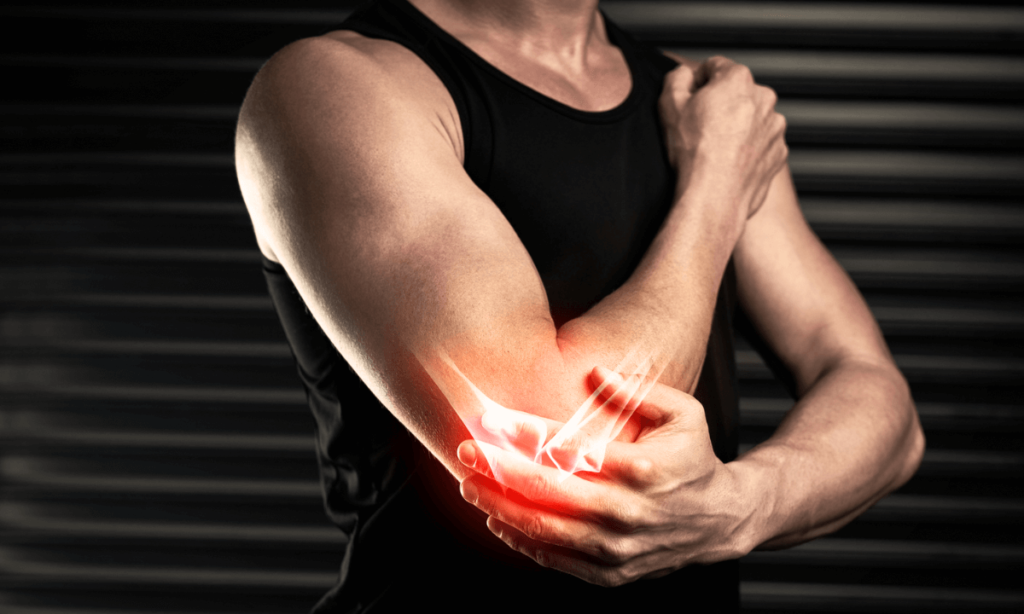
Tendonitis refers to inflammation within or around a tendon, usually stemming from overuse.
It commonly affects larger tendons like the patellar tendon (knees), Achilles tendon, biceps tendon, and rotator cuff tendons. Exercises that maximally load these structures can provoke tendonitis.
The hallmark symptom is pain during and after activity localized to the tendon. Swelling, tenderness, and impaired mobility may also occur. Pain generally subsides with rest but returns promptly upon resuming training.
Tendinosis
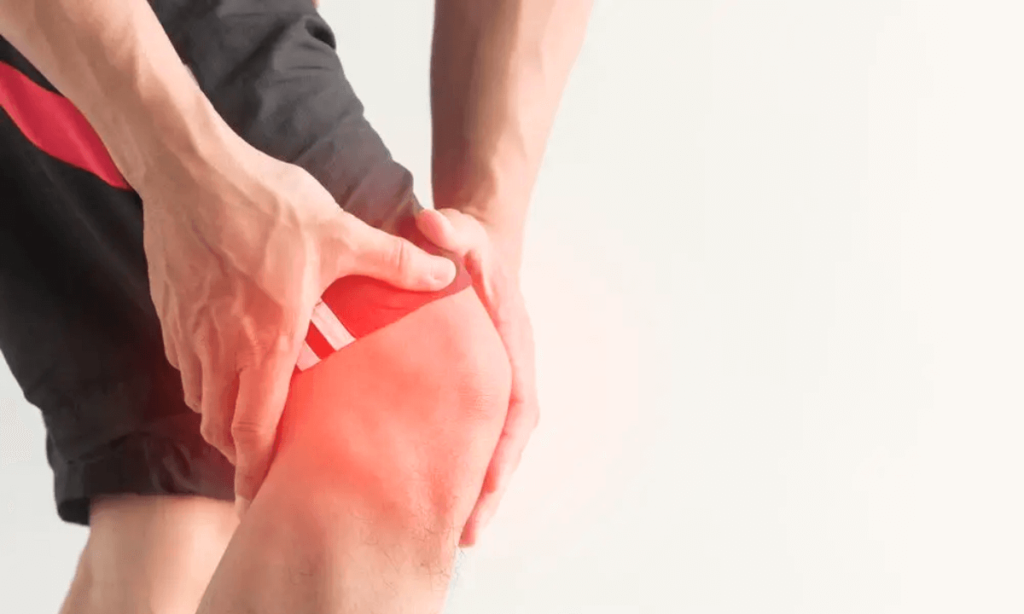
Left untreated, tendonitis can advance to tendinosis – a degeneration of tendon fibers resulting from chronic inflammation. Tendons lose collagen content and develop microscopic tears, causing weakness and heightened tear risk.
Avoiding Overuse Injuries
The keys to sidestepping tendon issues are proper load management, exercise variety, and scheduled rest.
Gradually increase training volumes and weights over time. This allows tendons to adapt to greater stresses. Training to failure and intense eccentric training should be used periodically, not constantly.
Vary your exercise selection using alternatives that shift stresses to different areas—for example, alternate between barbell and dumbbell presses.
Listen to pain signals and take 1-2 weeks off early tendonitis symptoms. Prevent total rest by temporarily shifting to lower-intensity machine training.
Schedule deload weeks every 4-8 weeks to allow tendons to fully recover. Similarly, take 2-4 weeks off after completing focused training blocks.
Proper warm-ups, physical therapy, and bracing can also protect vulnerable tendons. At the first sign of pain, ice and anti-inflammatories may curb early tendonitis.
For chronic cases, PRP or stem cell injections may help restore degenerated tendon tissue.
Rotator Cuff Injuries
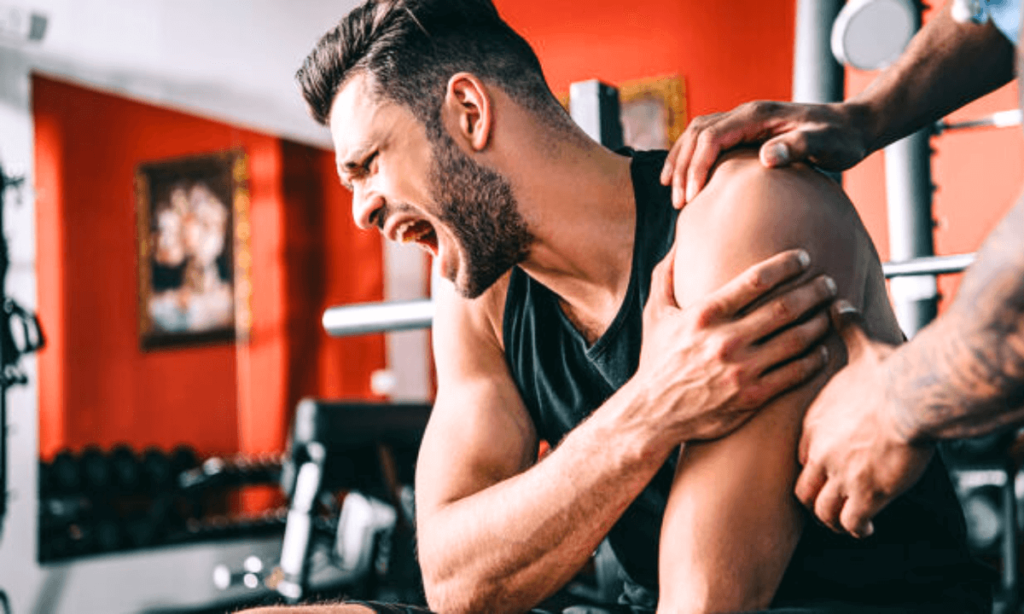
The rotator cuff comprises four small shoulder muscles vital for stabilizing the shoulder joint during overhead pressing and pulling motions.
The supraspinatus, infraspinatus, teres minor, and subscapularis coordinate to hold the upper arm firmly in the shoulder socket.
Rotator cuff injuries include:
Muscle Strains and Tears
Tendonitis
Bursitis (Inflammation of fluid-filled sacs cushioning the cuff) Impingement – Compression of the cuff under the shoulder’s bony acromion)
These conditions cause pain, mobility deficits, and severe weakness during pressing and pulling movements. Sleeping may also become uncomfortable.
Rotator cuff issues frequently result from:
- Shoulder overuse from heavy pressing and pulling volume
- Forceful eccentric contractions, especially during shoulder presses
- Poor exercise mechanics like allowing the shoulders to creep forward during presses
- Muscle imbalances between the medial and lateral rotators and deltoids
- Insufficient warm-up of the smaller cuff muscles
You can protect your rotator cuff by:
- Balancing push and pull volume for the shoulders
- Avoiding straight bar presses behind the neck
- Maintaining proper shoulder positioning and joint alignment
- Pre-exhausting the cuff with light lateral raises before heavy presses
- Strengthening the external rotators with exercises like face pulls
- Using a pain-free range of motion and weight loads
- Take extended rest from any exercises aggravate the cuff.
Undergo prompt medical evaluation for severe pain or weakness to determine if therapy, anti-inflammatories, or surgery are warranted.
Lower Back Injuries
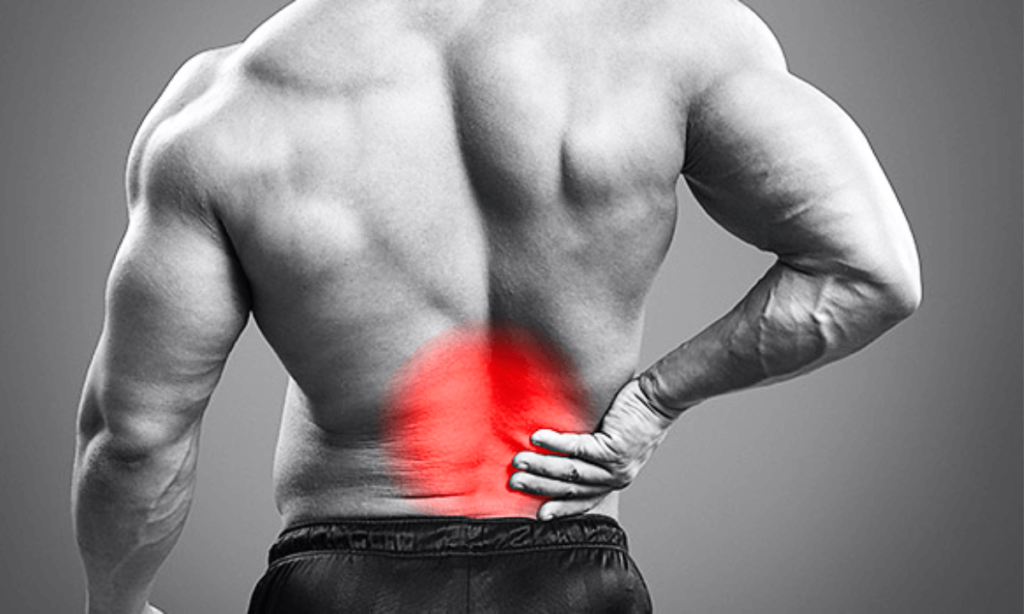
The lumbar spine withstands tremendous compressive and shear forces during compound lifts like squats and deadlifts.
Under heavy loads, poor technique markedly elevates back injury risks. Bulging discs, torn facet joint capsules, ligament sprains, and muscle strains are prevalent lumbar injuries in bodybuilding.
Symptoms may range from stiffness and soreness to excruciating spasms depending on severity.
The pain usually centers in the lumbosacral region just above the pelvis but can radiate down the legs if nerve impingement is present.
Onset commonly occurs when:
- Rounding the lower back due to poor bracing, mobility restrictions, or fatigue
- Lifting overly heavy weights using improper form
- Bouncing out of the bottom position of squats or deadlifts
- Abrupt spinal hyperextension during good mornings or back extensions
- Twisting under load, as can occur when handing off squat barbells
These motions excessively stress the passive paraspinal tissues and intervertebral discs versus the stronger spinal erector muscles.
You can safeguard your lower back by:
- Maintaining a neutral spine with proper bracing during lifts
- Strengthening the core muscles that stabilize your lumbar spine
- Addressing hamstring inflexibility through stretches like RDLs
- Using a weight belt for added bracing
- Focusing on controlled eccentrics and avoidance of spinal flexion under load
- Keeping added spinal loading gradual and conservative
- Take care to recognize painful form breakdown and cease lifting immediately if it occurs.
- Regular massage may also help prevent excessive stiffness and muscle spasms.
- Be proactive with core strength and remaining mobile through the hips and thoracic spine.
Seek prompt medical attention for any acute back pain, radicular symptoms, or neurological deficits, which may necessitate imaging, therapy, injections, or possibly surgery.
The Dangers of Overtraining
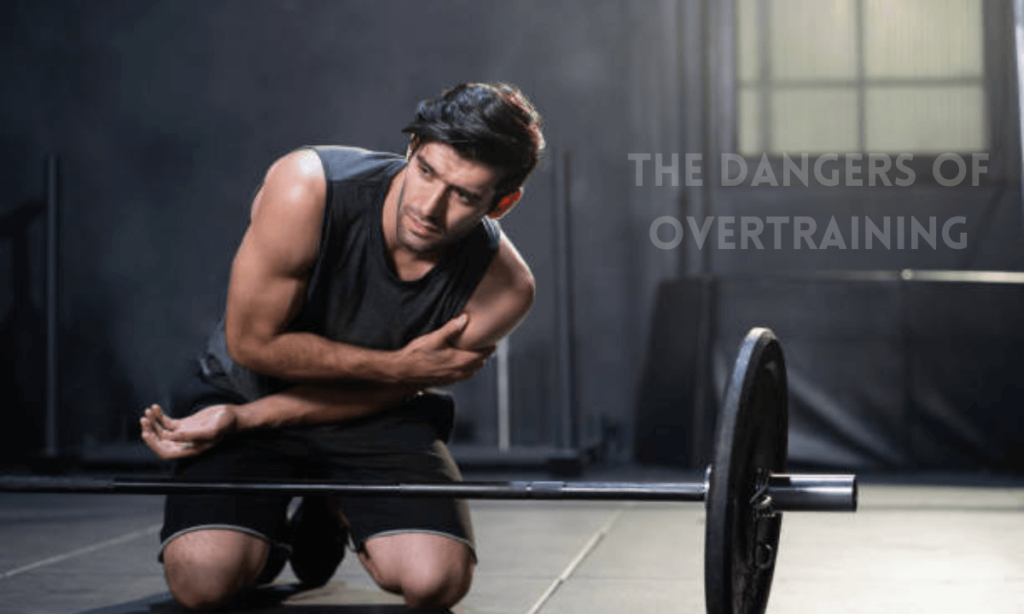
While not an injury per se, overtraining significantly elevates bodybuilding injury risks while severely hindering progress.
Pushing your body beyond its ability to recover and adapt is an easy trap when constantly pursuing new gains.
Symptoms that indicate overtraining may be developing include:
- Fatigue, weakness, and reduced performance
- Persistent muscle soreness and joint pains
- Elevated resting heart rate
- Frequent illness and infections
- Loss of motivation, depression, and irritability
- Disrupted sleep and appetite
- Hormonal dysfunction – amenorrhea in women
- Increased injury rate
Contributing factors include:
- Excessive volume, intensity, and frequency
- Insufficient caloric intake
- Inadequate rest and recovery practices
- High-life stresses outside the gym
- Poor program planning and periodization
You can combat overtraining by:
- Tracking workout volume, intensity, and quantitative progress
- Scheduling deload weeks every 4-8 weeks to promote full recovery
- Taking 1-2 weeks completely off after completing focused training blocks
- Monitoring body weight, sleep quality, and resting heart rate
- Adding recovery techniques like massage, stretching, and ice baths
- Identifying and controlling sources of life stress
At the first signs of overtraining, take a break from intense training until symptoms clear.
Start back slowly with reduced volume, weight, and frequency. Seek anti-inflammatory medication or cortisone injections if connective tissue overuse issues arise.
Avoiding Common Technique Pitfalls
While knowledge of biomechanics cannot guarantee safety, proper exercise technique markedly reduces injury risk.
Below are some key technical pointers to maintain ideal alignment, muscular recruitment, and joint motion:
Squats and Deadlifts
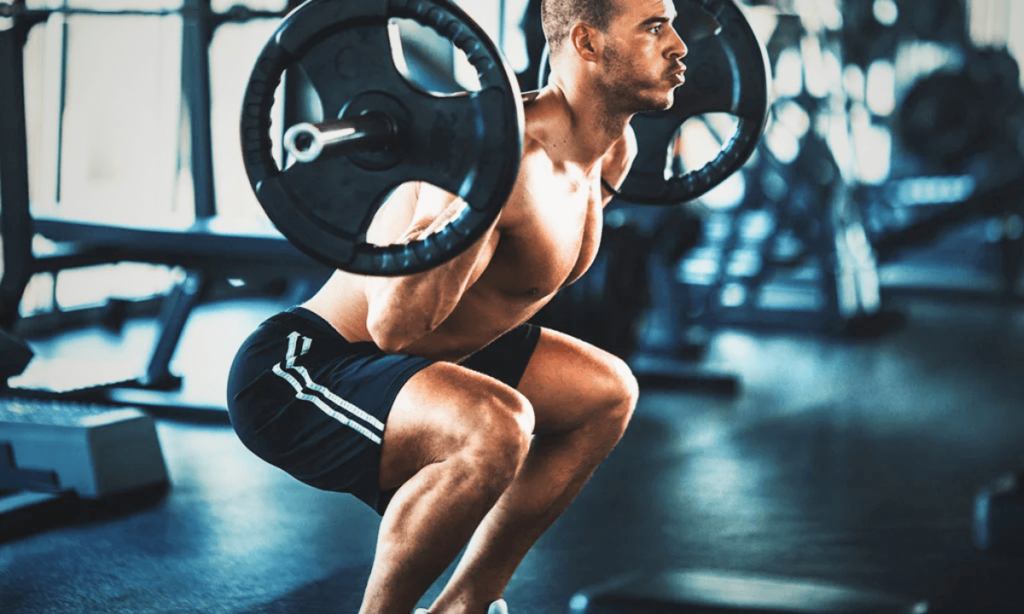
- Set up with even weight distribution and feet under hips
- Maintain a neutral spine and avoid rounded upper/lower back
- Hinge at the hips first on the descent keep the bar close to the legs
- Actively push knees outward to keep tracking over feet
- Keep rib cage down brace core hard and hold breath until lockout
- Use the hip drive to finish the lift with no spinal extension/flexion
Bench Press
- Retract shoulder blades firmly to avoid shoulder rounding
- Keep elbows ~45 degrees from the body; do not flare excessively
- Touch bar to the base of chest no bouncing or arching lower back
- Maintain tripod foot pressure do not let feet rise
- Unrack the bar with shoulders, not arms avoid unracking fatigue
Overhead Press

- Set up with a back neutral brace core to support the spine
- Raise elbows to align with shoulders to avoid flare
- Press the bar directly upward no push press or lean back
- Stop just before lockout to keep tension on delts
- Slowly lower the bar to the base of the neck to avoid the clavicle
The Takeaways
Success in bodybuilding requires pushing your body to its limits through progressive training. However, trauma is an inevitable risk of these extreme efforts.
By understanding the most prevalent injuries, their causes, and preventative steps, you can continue chasing gains while safeguarding your hard-earned physique.